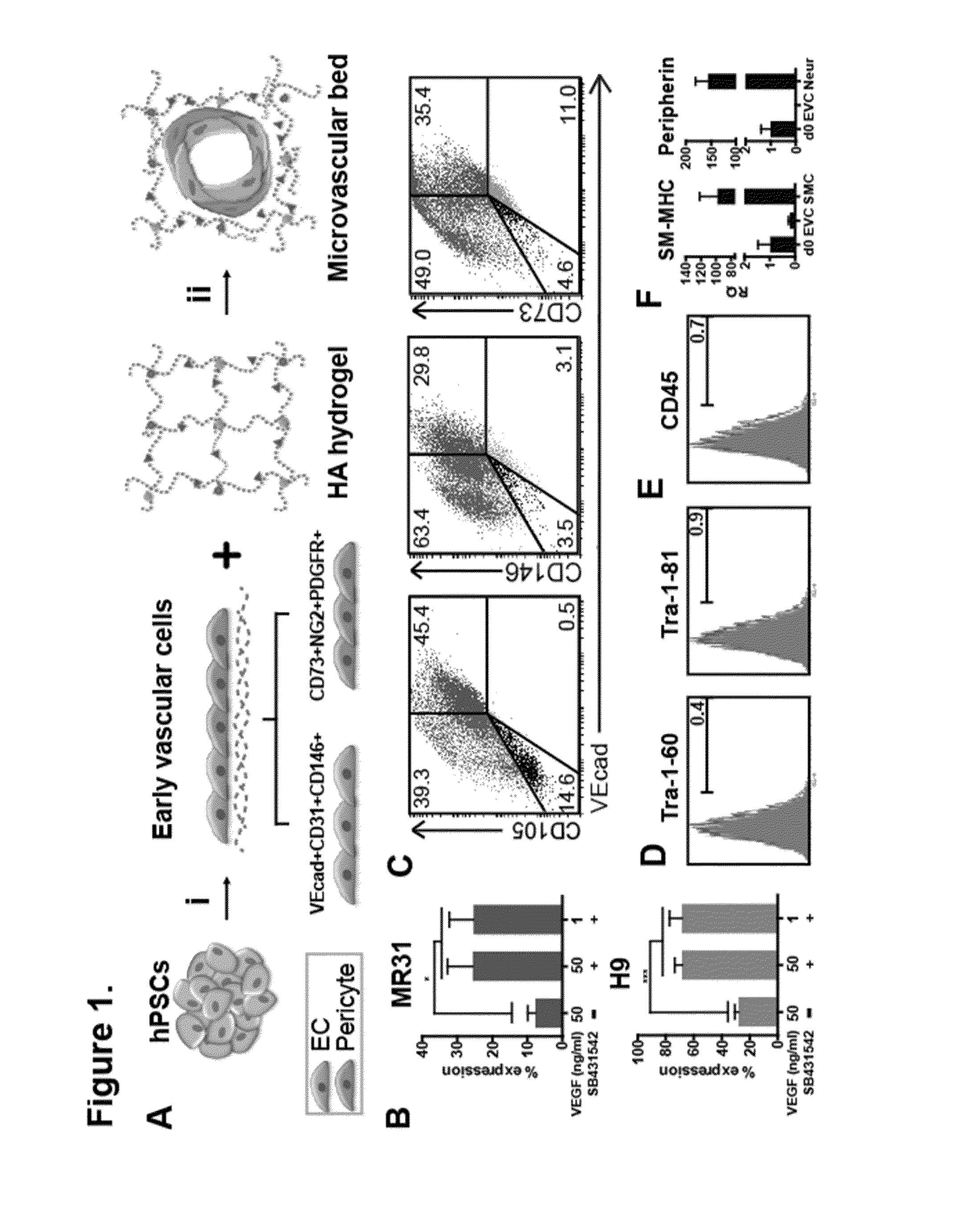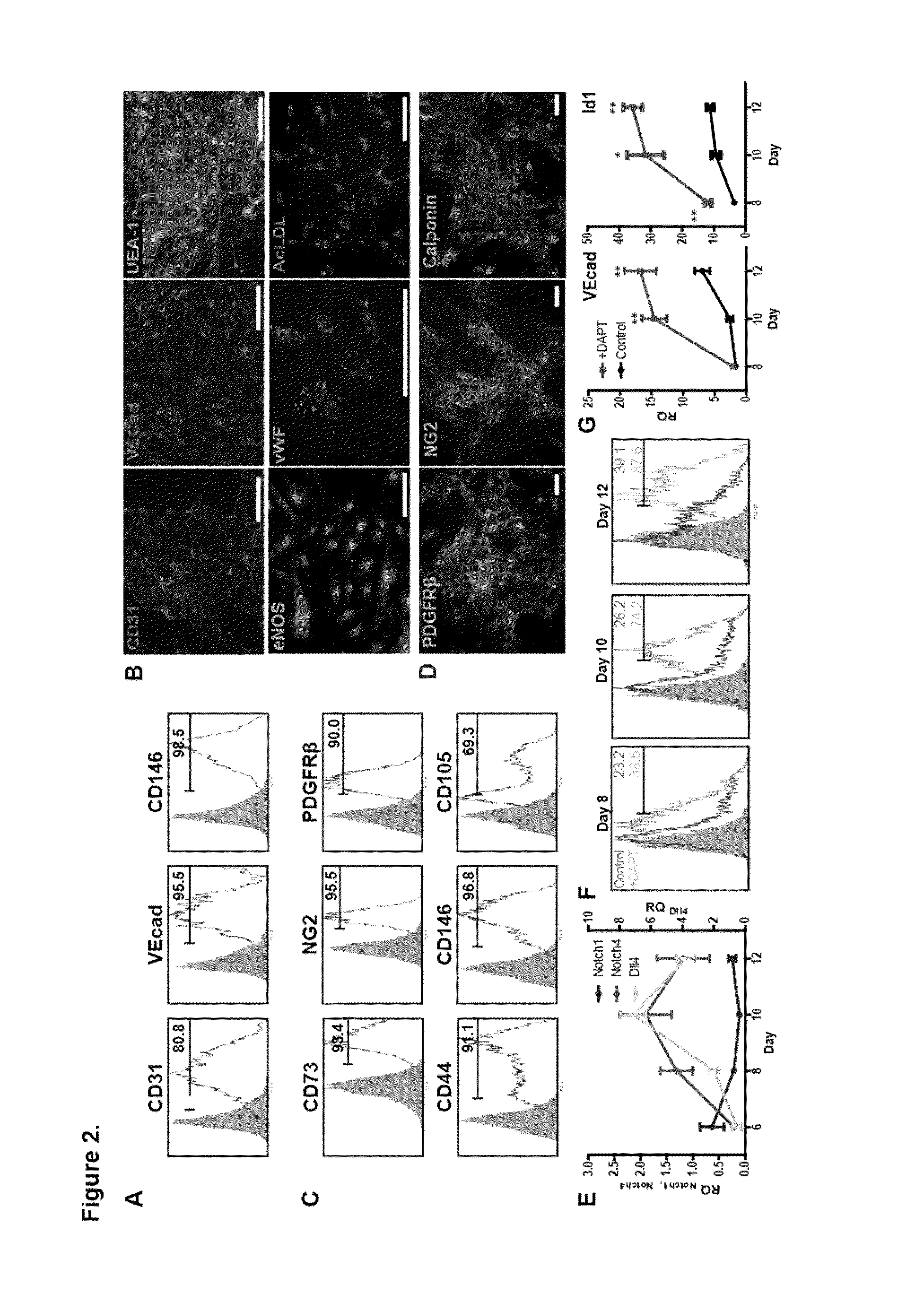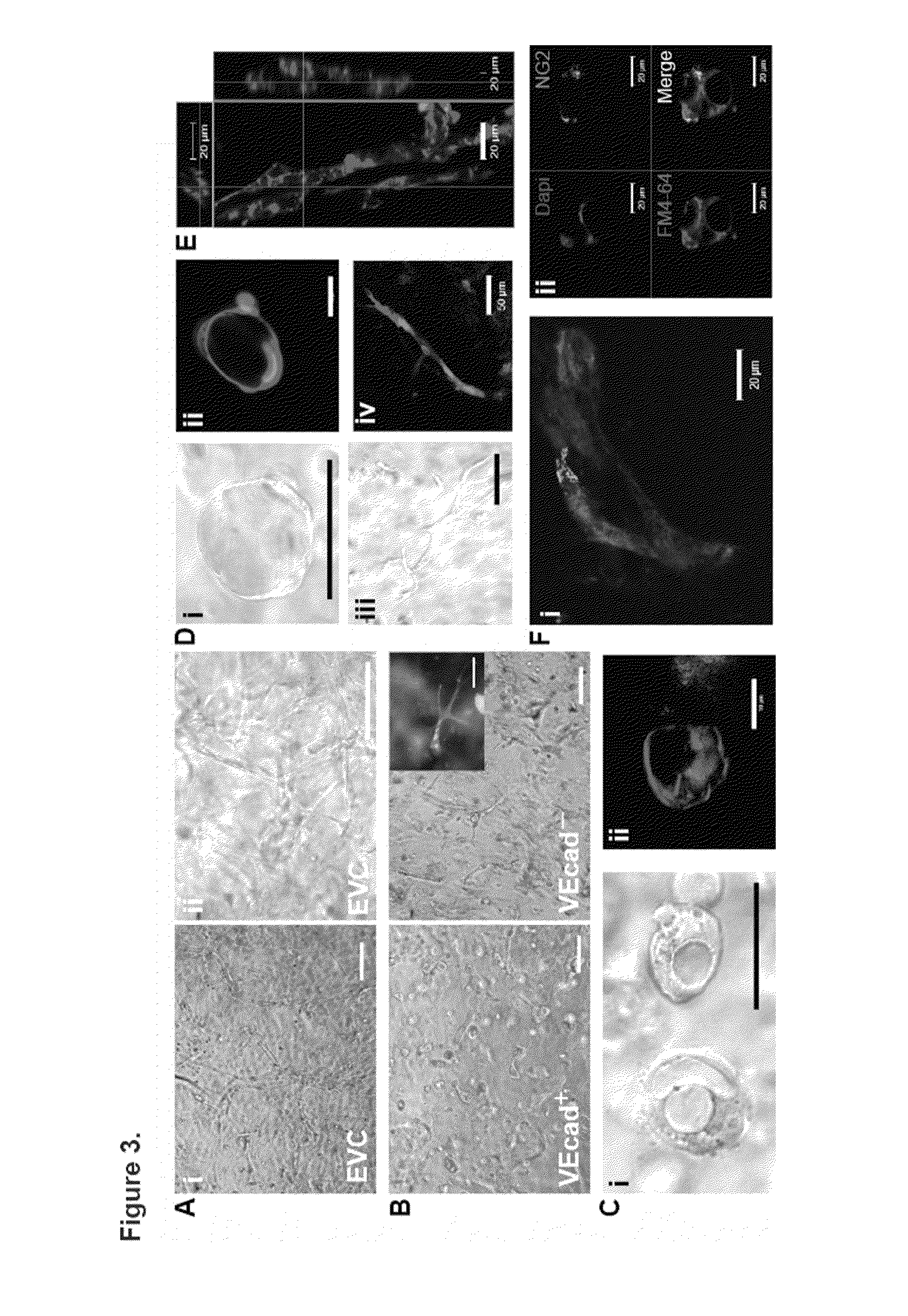Self-Organized Vascular Networks from Human Pluripotent Stem Cells in a Synthetic Matrix
a technology of human pluripotent stem cells and synthetic matrix, applied in artificial cell constructs, embryonic cells, peptide/protein ingredients, etc., can solve the problems of tissue regenerative therapy success, and none of these derived cells have been demonstrated to self-assemble into functional microvasculature containing both ecs and pericytes
- Summary
- Abstract
- Description
- Claims
- Application Information
AI Technical Summary
Benefits of technology
Problems solved by technology
Method used
Image
Examples
Embodiment Construction
[0032]The following description is provided to enable any person skilled in the art to make and use the invention and sets forth the best modes contemplated by the inventor of carrying out his invention. Various modifications, however, will remain readily apparent to those skilled in the art, since the general principles of the present invention have been defined herein specifically to provide a method for causing pluripotent stem cells to differentiate into functional vascular networks.
[0033]Derivation of EVCs from hPSCs
[0034]Toward clinically relevant outcomes and because microvascular architecture is a bicellular entity, we first sought to develop a robust and controlled method to differentiate hPSCs into a bicellular population with maturation capacity to both ECs and pericytes. Vascular endothelial cadherin (VEcad) expression has been shown to specify lineage commitment of ECs (James et al., 2010), while CD105, CD146, and CD73 have been proposed to mark pericyte progenitors (Da...
PUM
| Property | Measurement | Unit |
|---|---|---|
| Fraction | aaaaa | aaaaa |
| Time | aaaaa | aaaaa |
| Concentration | aaaaa | aaaaa |
Abstract
Description
Claims
Application Information
 Login to View More
Login to View More - R&D
- Intellectual Property
- Life Sciences
- Materials
- Tech Scout
- Unparalleled Data Quality
- Higher Quality Content
- 60% Fewer Hallucinations
Browse by: Latest US Patents, China's latest patents, Technical Efficacy Thesaurus, Application Domain, Technology Topic, Popular Technical Reports.
© 2025 PatSnap. All rights reserved.Legal|Privacy policy|Modern Slavery Act Transparency Statement|Sitemap|About US| Contact US: help@patsnap.com



